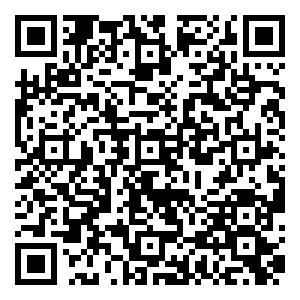Wind Tunnel Study on Precise Drag Coefficients of UHVDC Transmission Towers
-
摘要: 为了研究角钢输电塔的局部杆件和整体的风载阻力系数,采用高频天平测力试验获得了考虑干扰下横担和塔身主要角钢杆件随风向角变化的阻力系数,测试了不同风向角下塔身和横担的单片平面阻力系数和整体阻力系数,并分析了背风面降低系数的取值。在此基础上将试验结果与各国规范进行了比较。研究表明:局部杆件阻力系数受其位置变化而差异较大,大部分横担和塔身杆件的最大阻力系数值要大于GB 50009—2012《建筑结构荷载规范》建议值(1.3);横担的上下表面对其整体风荷载贡献明显,而我国DL/T 5154—2012《架空输电线路杆塔结构设计技术规定》可能仅考虑了迎风和背风面风荷载而导致给出的横担整体阻力系数偏小;塔身的迎风面和整体阻力系数接近国外规范但略大于我国规范;试验得到的横担和塔身背风面降低系数分别为0.73和0.62;相比不同规范,我国规范的背风面降低系数取值偏保守。Abstract: In order to study the wind drag coefficients on main rods and whole structure of an angle-steel transmission tower, high frequency force balance test was carried out to obtain drag force coefficients of main rods of the cross arm and tower body under various wind azimuths. Interference of surrounding rods on drag force was considered during the test. Meanwhile, drag force coefficients of a single plane and whole parts of the tower body and cross-arm were tested under different wind azimuths, respectively, and the corresponding shielding factors were also analyzed. In addition, the obtained experimental results were compared with the current national code provisions. The study showed that drag force coefficients of a main rod were significantly influenced by its location. Most rods of the cross arm and tower body had maximum drag force coefficients larger than 1.3 as recommended by Load Code for the Design of Building structures (GB 50009-2012). Wind loads acting on the upper and lower surfaces of the cross arm contributed a lot to overall wind loads on the cross arm, however. Technical Code for the Design of Tower and Pole Structures of Overhead Transmission Line (DL/T 5154-2012) only considered those on the windward and leeward surfaces of the cross arm, resulting in underestimation of overall wind drag force. The drag force coefficients of a single plane and whole parts of the tower-body were close to those given by the foreign codes, but slightly larger than those in Chinese codes. The tested shielding factors of leeward sides of the cross arm and tower body were 0.73 and 0.62, respectively. Comparing the test results with different code recommended values indicated that the shielding factors in Chinese codes were more conservative.
-
Key words:
- UHVDC /
- wind tunnel test /
- drag coefficient /
- angle steel /
- leeward shielding factor
-
[1] BAYAR D C. Drag coefficients of latticed towers[J]. Journal of Structural Engineering, 1986, 112(2):417-430. [2] PRUD H S, LEGERON F, LANGLOIS S. Calculation of wind forces on lattice structures made of round bars by a local approach[J]. Engineering Structures, 2018, 156:548-555. [3] MARA T G. Influence of solid area distribution on the drag of a two-dimensional lattice frame[J]. Journal of Engineering Mechanics, 2014, 140(3):644-649. [4] 程志军, 付国宏, 楼文娟, 等. 高耸格构式塔架风荷载试验研究[J]. 实验力学, 2000, 15(1):51-55. [5] 郭勇. 大跨越输电塔线体系的风振响应及振动控制研究[D]. 杭州:浙江大学, 2006. [6] 顾明, 郑远海, 张庆华. 典型输电塔平均风荷载和响应研究[J]. 中国工程机械学报, 2008, 6(1):6-12. [7] 张庆华, 顾明, 黄鹏. 格构式塔架风力特性试验研究[J]. 振动与冲击, 2009, 28(2):1-4. [8] 邓洪洲, 张建明, 帅群, 等. 输电钢管塔阻力系数风洞试验研究[J]. 电网技术, 2010, 34(9):190-194. [9] 楼文娟, 王东, 沈国辉, 等. 角钢输电塔杆件风压及阻力系数的风洞试验研究[J]. 华中科技大学学报(自然科学版), 2013, 41(4):114-118. [10] 沈国辉, 项国通, 邢月龙, 等. 2种风场下格构式圆钢塔的天平测力试验研究[J]. 浙江大学学报(工学版), 2014, 48(4):704-710. [11] 沈国辉, 项国通, 郭勇, 等. 圆钢输电塔架的风荷载阻力系数研究[J]. 特种结构, 2015, 32(5):62-65. [12] 张宏杰, 李正, 杨风利, 等. 六边形输电塔阻力系数与风荷载计算[J]. 中国电力, 2017, 50(3):107-112. [13] 中华人民共和国住房和城乡建设部.建筑结构荷载规范:GB 50009—2012[S]. 北京: 中国建筑工业出版社, 2012. [14] 国家能源局.架空输电线路杆塔结构设计技术规定:DL/T 5154—2012[S]. 北京:中国计划出版社, 2012. [15] JEC. Design standards on structures for transmissions: JEC-127-1979[S]. Tokyo: Japanese Electrotechnical Committee, 1979. [16] BSI. Lattice towers and masts:BS 8100-1-1986[S]. London: British Standurd Institution, 1986. -

 点击查看大图
点击查看大图
计量
- 文章访问数: 237
- HTML全文浏览量: 55
- PDF下载量: 0
- 被引次数: 0

 登录
登录 注册
注册 E-alert
E-alert

 登录
登录 注册
注册 E-alert
E-alert


 下载:
下载:
